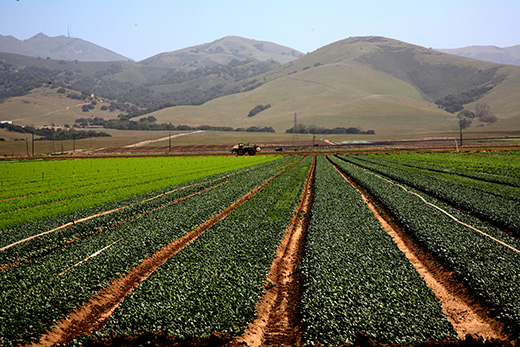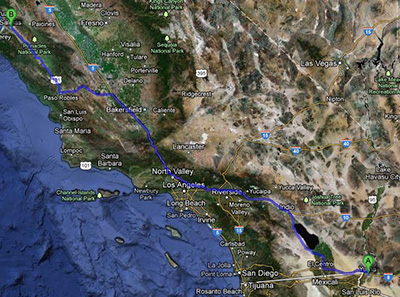News and Stories
California Dreamin’

Last year at this time we talked about the monumental harvesting move that happens twice annually—how and why it is done as well as the enormous amount of respect these growers deserve for their efforts.
So now it’s that time again. The long, problem-wrought winter season is finally over and growers have begun the transition north for the spring and summer months. Many of Markon’s suppliers of Markon First Crop and Ready-Set-Serve products have completed the 575-mile move in an incredibly short time frame, including packing all of the machinery piece-by-piece into trucks and leaving Yuma, Arizona on a Friday, trucking everything north to Salinas, California, unpacking and reassembling it all, and starting full production on the following Monday (see route below). Yes, you read that right—they do it all in one weekend!

This year’s winter season often felt like one weather problem after another. Frost and freezing temperatures one week followed by high temperatures the next caused quality issues ranging from bloom drop to internal burn and epidermal blistering in many crops. Supplies were limited nearly all season; growth was slow and lettuce weights were low. It was a tough time and the whole industry felt it, yet everyone did their best to get the existing high-quality product into our foodservice customers’ coolers.
But now spring has arrived and with it the hope of a more abundant and successful season in the Huron and Salinas Valley regions of California. So far we’ve had a few light showers, but nothing that has greatly affected supply levels or quality. Overall, the weather in these northern regions has been sunny and warm with temperatures in the 70s—ideal for plant growth and perfect conditions for harvesting. Most growers are in Huron (the San Joaquin Valley) at this time, but they will soon make the hop, skip, and jump over to the Salinas Valley.
Barring any unforeseen tricks from Mother Nature, here’s a recap of what you can expect this spring and summer during the Salinas growing season:
- The best quality vegetables are usually harvested from mid-May through late July/mid-August
- Mother Nature typically shines on the Salinas Valley from April through early to mid-June, allowing vegetables to develop/mature and produce the best quality and highest yields possible
- The Salinas Valley has a built-in air conditioner in the form of warm daytime temperatures followed by cool, crisp nights—ideal for growing fresh vegetables
- From early to mid-June, a marine layer (or fog as the locals call it) rolls into the valley from the Monterey Bay by early evening, cooling air temperatures down, then rolls back out to the coast between 7:00 a.m. and early afternoon
- The Salinas Valley is one of the most fertile areas in the world
- An alluvial silty/clay soil sits from the mouth of the valley inland for roughly 20 miles
- Beyond that, farther inland, is sandy loam
- The different soil types and varied daytime temperatures allow for a seven-month growing window
- The farther the vegetables are grown from the coast, the warmer the daytime temperatures become (think of that built-in air conditioner)
- Vegetables are harvested early in the season: May-June in the southern part of the valley; from mid-June through August, the harvest is concentrated closer to the coast due to the cooler, fog-related temperatures at night
This year’s spring season is already underway. Markon’s grower-shipper partners are hard at work harvesting and packing the high-quality produce most of the U.S. and Canada will eat and serve all summer long. This time is known as the sweet spot, the light and sunny time when delicious ingredients are most plentiful and produce on the plate abounds. Let’s all appreciate our good fortune and applaud all of the tremendous work it takes to make this happen.
Cheers!
